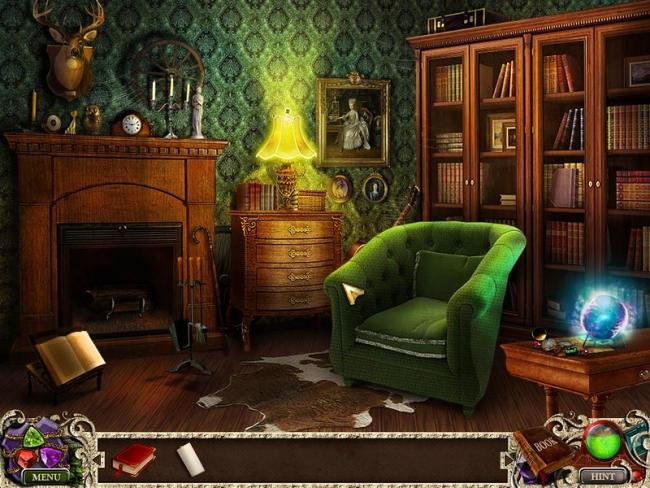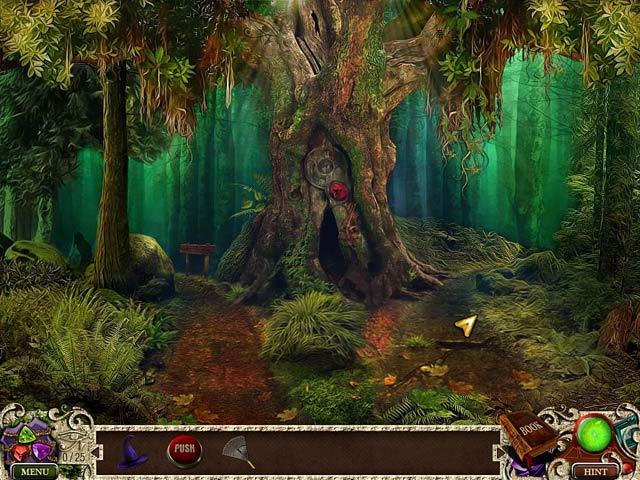- Wondering how to get Monopoly GO! free rolls? Well, you’ve come to the right place. In this guide, we provide you with a bunch of tips and tricks to get some free rolls for the hit new mobile game. We’ll …
Best Roblox Horror Games to Play Right Now – Updated Weekly
By Adele Wilson
Our Best Roblox Horror Games guide features the scariest and most creative experiences to play right now on the platform!The BEST Roblox Games of The Week – Games You Need To Play!
By Sho Roberts
Our feature shares our pick for the Best Roblox Games of the week! With our feature, we guarantee you'll find something new to play!Type Soul Clan Rarity Guide – All Legendary And Common Clans Listed!
By Nathan Ball
Wondering what your odds of rolling a particular Clan are? Wonder no more, with my handy Type Soul Clan Rarity guide.
The Dreamatorium of Dr. Magnus Review
Lots of folks make hidden object games these days. The popularity of the genre means a lot of games on the market, and a lot of competition. It also means fast development times and the premature release of games that to put it bluntly, are not ready for prime time. The Dreamatorium of Dr. Magnus, the new hidden object adventure by Two Desperados, is one of those. Inconsistent in presentation and sloppy in the details, this is one adventure title that was definitely a preemie.

They may call it the Dreamatorium, but this one is host to some gaming nightmares.
Lots of folks make hidden object games these days. The popularity of the genre means a lot of games on the market, and a lot of competition. It also means fast development times and the premature release of games that to put it bluntly, are not ready for prime time. The Dreamatorium of Dr. Magnus, the new hidden object adventure by Two Desperados, is one of those. Inconsistent in presentation and sloppy in the details, this is one adventure title that was definitely a preemie.
The game’s description on the Big Fish site says “The town doctor, Dr. Magnus withdrew from society following the tragic death of his wife and daughter in a car accident. In his despair, Dr. Magnus became obsessed with the idea of contacting the souls of his loved ones. He began conducting ever more dangerous experiments ruinous to his own health until he himself, disappears.” I actually read the blurb after playing the game, and was surprised that it was so much more informative than the game itself. Those few sentences concisely answered the numerous questions generated by the game’s convoluted presentation, and if I’d never read them, I’d still be in the dark.
What I understood solely from playing the game was that I was one Sarah Green, fledgling detective, about to take on my first case. I was assigned to look for Dr. Magnus, a strange man who, with his stovepipe hat and waxed mustache, more resembled a villain from a 19th century melodrama than a doctor. The good doctor was the first representation of the strange and misleading things the game had in store; many would soon follow.
Early on, the game showed the wrecked car that caused the death of Dr. Magnus’s family. This indicated that the story was taking place in the present day. (Why a guy who looks like Snidely Whiplash would be driving a Chevy crossover, I don’t know.) As the game progressed though, the heroine encountered multiple 19th century paintings wherein she recognized images of herself. The game’s environments also reflected a 19th century aesthetic, and this led me to two conclusions: either Dr. Magnus was a visitor from another time (he isn’t), or the developers failed to consider how he or the environments fit into the story.
In the end, I decided it was the latter. The game’s presentation as a whole is confusing, and often Dr. Magnus seems like it can’t decide what sort of game it really wants to be. The disconnect becomes even more apparent when you try to match the story with the look and sound of the game. You start with a tragic back story regarding a man driven mad with grief. That sets things up to be suspenseful, horrific even, but they aren’t. Bright, colorful environments and perky accordion music defy this idea, and make the game about as spooky as a trip to a well-lit grocery store.
Spooky or otherwise, the look of the game cries out for refinement – especially the character portraits. The environments are a bit better, but their color schemes are often garish. Aside from these issues, Dr. Magnus is guilty of just about every hidden object offense imaginable: inconsistent interactivity, sloppy narrative, poor translation, boring hidden object scenes and over-familiar puzzles.
The first one, inconsistent interactivity, is very high on my list of no-nos. Some rooms in the game have hardly anything to interact with; others have things that are interactive for no reason at all. The former feel dead, while the latter create red herrings that make you think you’re supposed to do something with items when you’re not. Random portraits you can look at, lights you can turn on and off, cabinet doors you can open when there’s nothing inside—what’s the point of including things like that? All it does is convince you that you’re missing something and/or make you over-use the Hint button.
While other aspects of the gameplay are less slipshod than this, they’re still not that much fun. Hidden object scenes are of the plain-vanilla kind, with no item manipulation or riddles to mix things up, and puzzles are familiar and forgettable.
Other areas where Dr. Magnus fails to impress are in its narrative and its poorly translated text. The narrative is one of the strangest I’ve seen in some time, as it basically gives the surprise ending away in the first two seconds of the game, thus killing your motivation to play the game at all. It’s absurd during the last half of the game when the heroine keeps acting baffled and asking questions you’ve known the answer to since the opening cinematic.
As far as the text and translation issues go, the game has no voice acting and so is utterly dependent on text to communicate mood, emotion and information. Too bad then, that more effort wasn’t made to eliminate silly mistakes.
From the credits (and their website), I gathered that Two Desperados is a very small, very inexperienced team, and this explains a lot about The Dreamatorium of Dr. Magnus’s plethora of problems. The team has a lot to learn, especially this: that while development tools are readily available, making a good hidden object game isn’t as easy as it looks. Here’s hoping that if they dive into the genre again, they’ll take the time to brush up on their graphics skills and learn what it takes to create a cohesive setting that supports, rather than detracts from, the story. Here’s also hoping they learn the importance of hiring a good translator and that giving away the surprise ending 60 seconds into the game is a bad thing. Anyway, best of luck to you Two Desperados. Your next title can’t help but be better than this one.

The good

The bad
More articles...
Monopoly GO! Free Rolls – Links For Free Dice
By Glen Fox
Wondering how to get Monopoly GO! free rolls? Well, you’ve come to the right place. In this guide, we provide you with a bunch of tips and tricks to get some free rolls for the hit new mobile game. We’ll …Best Roblox Horror Games to Play Right Now – Updated Weekly
By Adele Wilson
Our Best Roblox Horror Games guide features the scariest and most creative experiences to play right now on the platform!The BEST Roblox Games of The Week – Games You Need To Play!
By Sho Roberts
Our feature shares our pick for the Best Roblox Games of the week! With our feature, we guarantee you'll find something new to play!Type Soul Clan Rarity Guide – All Legendary And Common Clans Listed!
By Nathan Ball
Wondering what your odds of rolling a particular Clan are? Wonder no more, with my handy Type Soul Clan Rarity guide.








 “
“ “
“